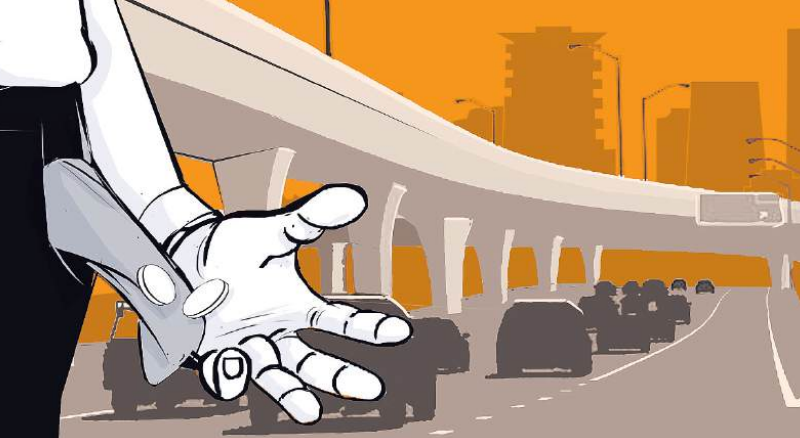
There has been much talk of “infrastructure projects” following President William Ruto’s recent state visit to China.
A good part of this, I believe, is that we tend to see infrastructure as the golden key to “development” (by which we mean, economic growth).
And China may not have a great reputation in the respect for human rights: but it has a stellar reputation when it comes to building world-class infrastructure.
But it is important to mention here that the one thing (building new infrastructure or upgrading existing infrastructure) does not automatically lead to the other (economic growth).
I have often argued that whereas rich nations can afford to look ahead and anticipate future infrastructural needs, for a relatively poor country like Kenya, the only realistic policy is that infrastructure must be built in response to demand. And not just any demand, but in response to congestion.
For example, if we leave aside for the moment the question of whether its final cost was really value for money, I would say that the standard gauge railway made sense because the country had long outgrown the Mombasa-Nairobi highway, as well as the old “meter gauge” railway, which was about 100 years old by the time the SGR project was launched. The old railway was incredibly inefficient. And the Mombasa-Nairobi highway was always clogged up with traffic, especially trucks hauling imports all the way to Uganda and beyond.
In much the same way, if you have ever tried to travel west of Nairobi during the Christmas season, you will surely agree that the six-lane highway from Nairobi to Nakuru (and beyond), which is often spoken about, cannot come soon enough. Indeed it would be even better if it were an eight-lane highway.
The congestion already exists, giving a clear indication that there is a desperate need for infrastructure upgrading on that route.
But not all infrastructure is created equal.
Back in late 2019, I wrote a column in which I compared the Moi International Airport in Mombasa, with the then relatively new Isiolo International Airport in Isiolo.
My point was that whereas the then relatively small MIA had been expanded in the 1990s in response to demand for a bigger airport serving the coastal beach resorts, which would facilitate increased tourist arrivals, the Isiolo International Airport was not a response to direct demand of any kind.
This is what I wrote: “As recently as November 17th, there was a prominent article in a Sunday newspaper under the headline, “Bid to breathe life into Isiolo Airport hits turbulence as travellers keep off”.
The article explained this airport had “a capacity to handle 350,000 passengers annually [but] only serves the occasional charter flight”.
Meanwhile the declared purpose for which this airport was built has changed. It was initially intended to open up the considerable tourism potential of that remote area, and to simultaneously – somehow – make Isiolo a “resort city.”
It is now being alleged that its real purpose is “to decongest Wilson Airport” by diverting the airfreighting of miraa to Somalia from Wilson Airport to Isiolo International Airport.
This is the kind of thing that happens when infrastructure is built without any serious assessment of whether or not there is a pressing need for that particular infrastructure project.
This brings us to one of the key outcomes of the President’s recent state visit to China. Apparently, a Chinese investor has been found, who is willing to invest substantially in the comprehensive revamping of two hotels which were once icons of Kenya’s tourism sector: The Hilton Hotel and the Intercontinental Hotel, have been closed down for some time, and both are partially government-owned.
Any plan for the reopening of these hotels must necessarily lean heavily on the fact that the Nairobi Central Business District is now very easily accessible from the Jomo Kenyatta International Airport, thanks to the elevated Nairobi Expressway, which is a President Uhuru Kenyatta legacy infrastructure project.
Most ordinary Kenyans may not regularly use that expressway and may just see it as a marvel of Chinese engineering. But for the many who come to Kenya every year for conferences, the drive from the airport to the CBD was previously a total nightmare, usually taking at least two hours.
The expressway changed all that.
As many have pointed out, the mere existence of that expressway is a major game changer when it comes to hosting major conferences in Nairobi.











